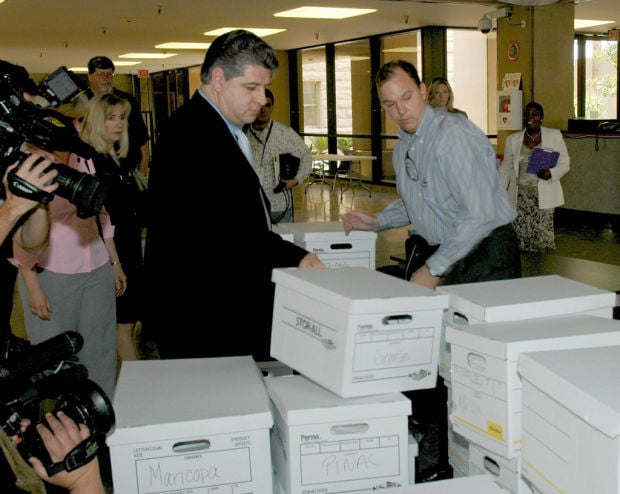PHOENIX — Republican lawmakers are making another bid to make it more difficult for Arizonans proposing their own laws to gather sufficient signatures.
Legislation awaiting action in both the House and Senate would keep in place existing laws that spell out how many names are required to put a measure on the ballot, based on a percentage of people who voted in the last gubernatorial election.
But HCR 2005 and SCR 1023 would add the additional burden of having to obtain signatures in each of the state’s 30 legislative districts —and in proportion to the number of gubernatorial votes in each district.
Lawmakers were supposed to vote on both plans on Wednesday. But the proposals, which ultimately would need voter approval in 2020, hit a snag as some Republicans questioned the breadth of the requirement and Democrats were universally opposed.
Rep. Bret Roberts, R-Maricopa, said the change would give some voice to voters statewide, particularly in rural areas, about what gets on the ballot. “It all shouldn’t come from Maricopa and Pima county,” he said. “I think everybody should be at the table.”
Democrats call the proposed change yet another effort by Republicans and business interests to make the initiative process more difficult, particularly for groups that don’t have a lot of money to hire paid circulators who can go to all corners of the state to gather signatures.
And some Republicans are balking, not at the concept but at the hurdle.
As written, the measures would require the signatures of 10 percent of those who voted in each legislative district in the last gubernatorial election to get a statutory change on the ballot.
So, for example, that would mean nearly 9,900 signatures from Legislative District 11 which encompasses parts of Pinal and Pima counties, nearly 8,200 from LD 21 which is the area around Sun City and Peoria, 11,251 in LD 1 in the Prescott area and 4,788 for LD 4 which takes in part of Yuma extending into Maricopa County.
Those numbers, extrapolated statewide, are too much of a hurdle according to several Republicans.
“I think 10 percent is just too much,” said Sen. Heather Carter, R-Cave Creek. “It makes it almost impossible (to get the signatures) except for large, out-of-state interests with very deep pockets to get anything on the ballot.”
Sen. Paul Boyer, R-Phoenix, said he can accept the idea — if the threshold is lower.
“I think, personally, 2 percent is reasonable,” he said.
But Rep. Regina Cobb, R-Kingman, rejected the idea that a 10 percent hurdle in each of the 30 districts works against grassroots petition drives with little cash.
“If you’re grassroots, you’re pulling somebody in from each district to go out there and get their people that they really depend on and the people who know what’s going on in their district,” she said. But even Cobb said the 10 percent floor may be too much.
“Equity is what we want,” she said.
Given that Republicans have just a two-vote edge in the Senate — and only one in the House — internal opposition to that 10 percent could force a compromise.
No date has been set to try to bring either measure to the House and Senate floors.
Arizona used to have a requirement for candidates for statewide office to get a certain number of their signatures from at least three of the state’s 15 counties. But that mandate was voided by a judge in 2014.





